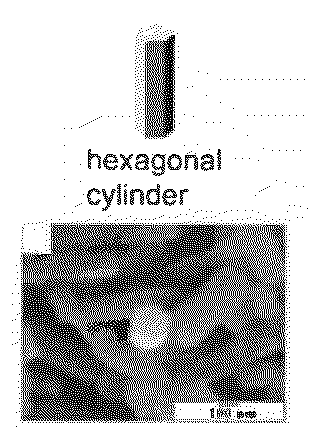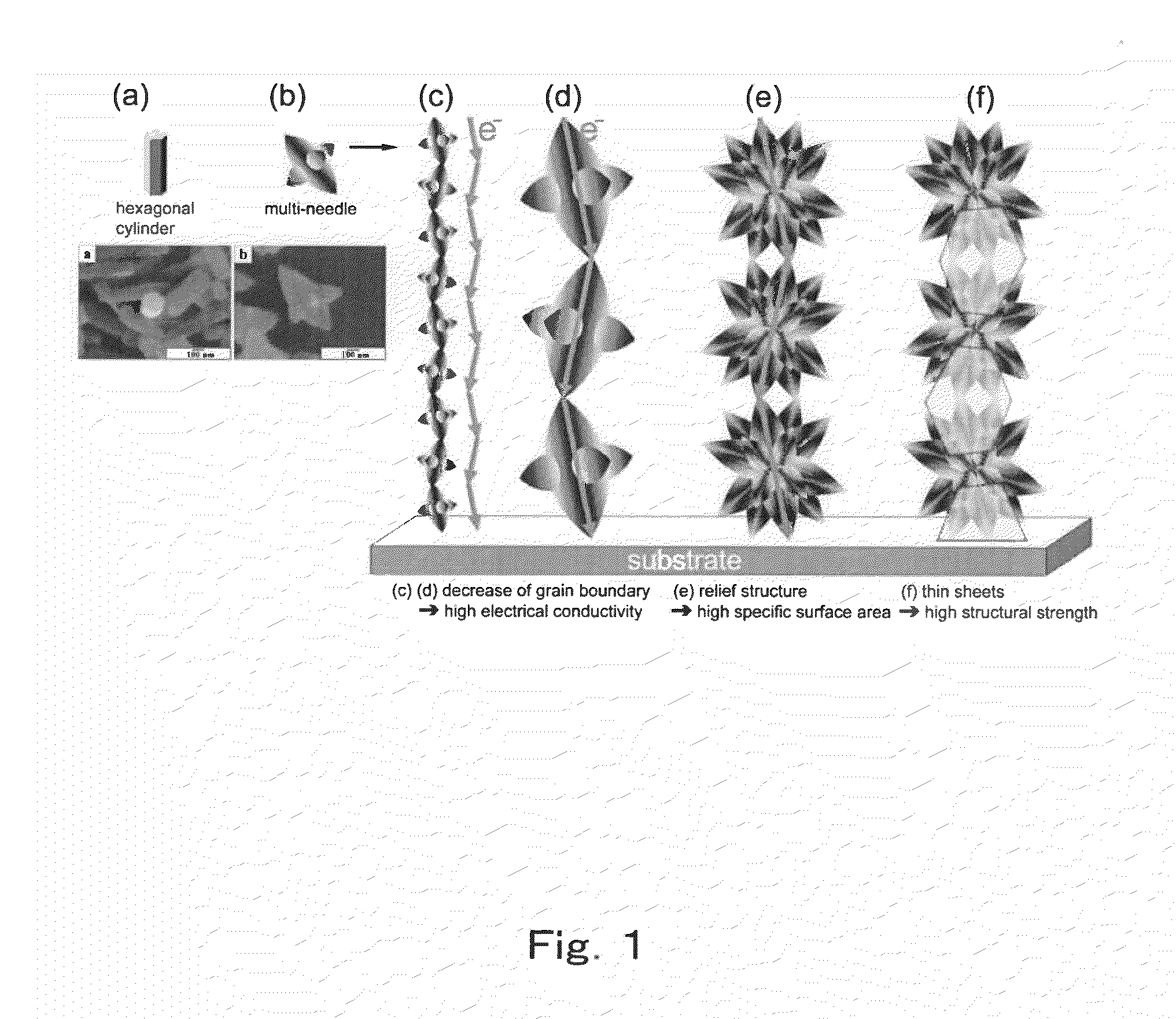Zinc oxide particle, zinc oxide particle film, and processes for producing these
a zinc oxide and film technology, applied in the direction of polycrystalline material growth, chemistry apparatus and processes, crystal growth process, etc., can solve the problems of insufficient mechanical strength of zinc oxide wire film, inability to achieve adequate electroconductivity, and difficulty in achieving high specific surface area of hexagonal columnar particles, etc., to achieve greater specific surface area, lower heat resistance, and high specific surface area
- Summary
- Abstract
- Description
- Claims
- Application Information
AI Technical Summary
Benefits of technology
Problems solved by technology
Method used
Image
Examples
working example 1
(1) Production of Multi-Needle Zinc Oxide Particles having Relief Structure on the Surface
[0061]15 mM of zinc nitrate hexahydrate was dissolved in 60° C. distilled water, and 15 mM of ethylenediamine was added to the solution to precipitate the ZnO. A glass substrate was tipped into the solution, and the solution was left for 80 minutes at 60° C. without being stirred. The solution turned milky immediately after the addition of the ethylenediamine. The ethylenediamine plays an important role in this reaction system, and the addition of the ethylenediamine causes the ZnO to produce uniform nuclei within the solution, so that ZnO particles are produced, which turns the solution milky. After this, the ZnO particles slowly settled onto the substrate, where crystal growth continued. The settling of the particles that produced uniform nuclei resulted in the solution becoming a pale white after 80 minutes. About 1 hour after the start of the reaction, a high degree of supersaturation was r...
working example 2
(1) Production of Composite Material Comprising Zinc-Containing Thin film and Multi-Needle Zinc Oxide Particles on the Surface
[0064]A glass substrate was tipped into a 60° C. solution containing 15 mM of zinc nitrate hexahydrate and 15 mM of ethylenediamine, and the solution was held for 6 hours at 60° C. without being stirred, using a water bath. The heating by water bath was then halted, and the solution was allowed to cool naturally for 42 hours. The solution turned milky immediately after the addition of the ethylenediamine, and turned clear again after 6 hours. After 6 hours the bottom part of the reaction vessel was covered with white sediment. The degree of supersaturation in the solution was extremely high for about 1 hour after the start of the reaction, after which it decreased along with a change in the color of the solution.
(2) Evaluation
[0065]The ZnO particle film thus produced exhibited a form in which multi-needle ZnO particles were bonded together in a thin film (FIG...
PUM
| Property | Measurement | Unit |
|---|---|---|
| porosity | aaaaa | aaaaa |
| pore size | aaaaa | aaaaa |
| pore size | aaaaa | aaaaa |
Abstract
Description
Claims
Application Information
 Login to View More
Login to View More - R&D
- Intellectual Property
- Life Sciences
- Materials
- Tech Scout
- Unparalleled Data Quality
- Higher Quality Content
- 60% Fewer Hallucinations
Browse by: Latest US Patents, China's latest patents, Technical Efficacy Thesaurus, Application Domain, Technology Topic, Popular Technical Reports.
© 2025 PatSnap. All rights reserved.Legal|Privacy policy|Modern Slavery Act Transparency Statement|Sitemap|About US| Contact US: help@patsnap.com



